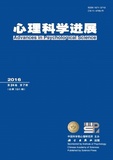|
|
An integrated perspective on western creativity theories
ZHANG Yakun, CHEN Lung An, ZHANG Xingli, SHI Jiannong
2018, 26 (5):
810-830.
doi: 10.3724/SP.J.1042.2018.00810
One of the long-standing state among scholars researching the psychology of Creativity is that while western theories stress the importance of big-C, little-C, the process, the person, the product, the press and other concepts of Creativity from an ever-expanding variety of disciplines. But these systems are various and complicated, making man difficult grasp the point of the problem. In order to analyze the scope of application of each theory (mainly including Kaufman’ Four-C Model, Csikszentmihalyi’s Systems Model of Creativity, Sternberg’s Propulsion Theory of Creative Contributions, Amabile’s Componential Model of Creativity, and Gl?veanu’s 5A Theory of Creativity), we summarized these systematic theories of creativity from two directions, forming a rectangular coordinate system that we called the Galaxy Developmental Model for it is analogous to the process of galaxy development. One direction is perspective of development (from Mini-C to Little-C, then Pro-C, and finally Big-C); Another is perspective of connection (from the cognitive neural basis of creativity to the process of creativity…finally the socio-cultural aspect of creativity). We are trying to provide a method allowing us to understand each theory clearly and to establish systems view of creativity, as well as paving a way for further research and application.
Related Articles |
Metrics
|




